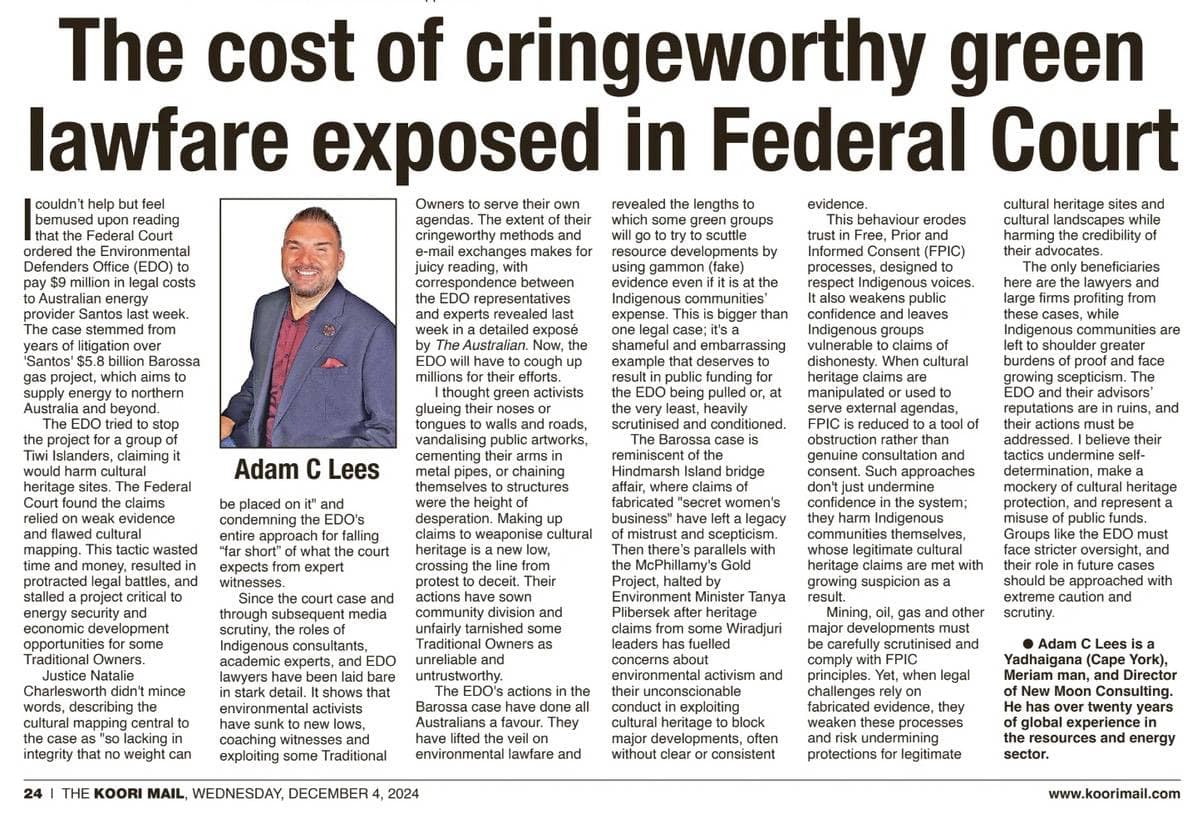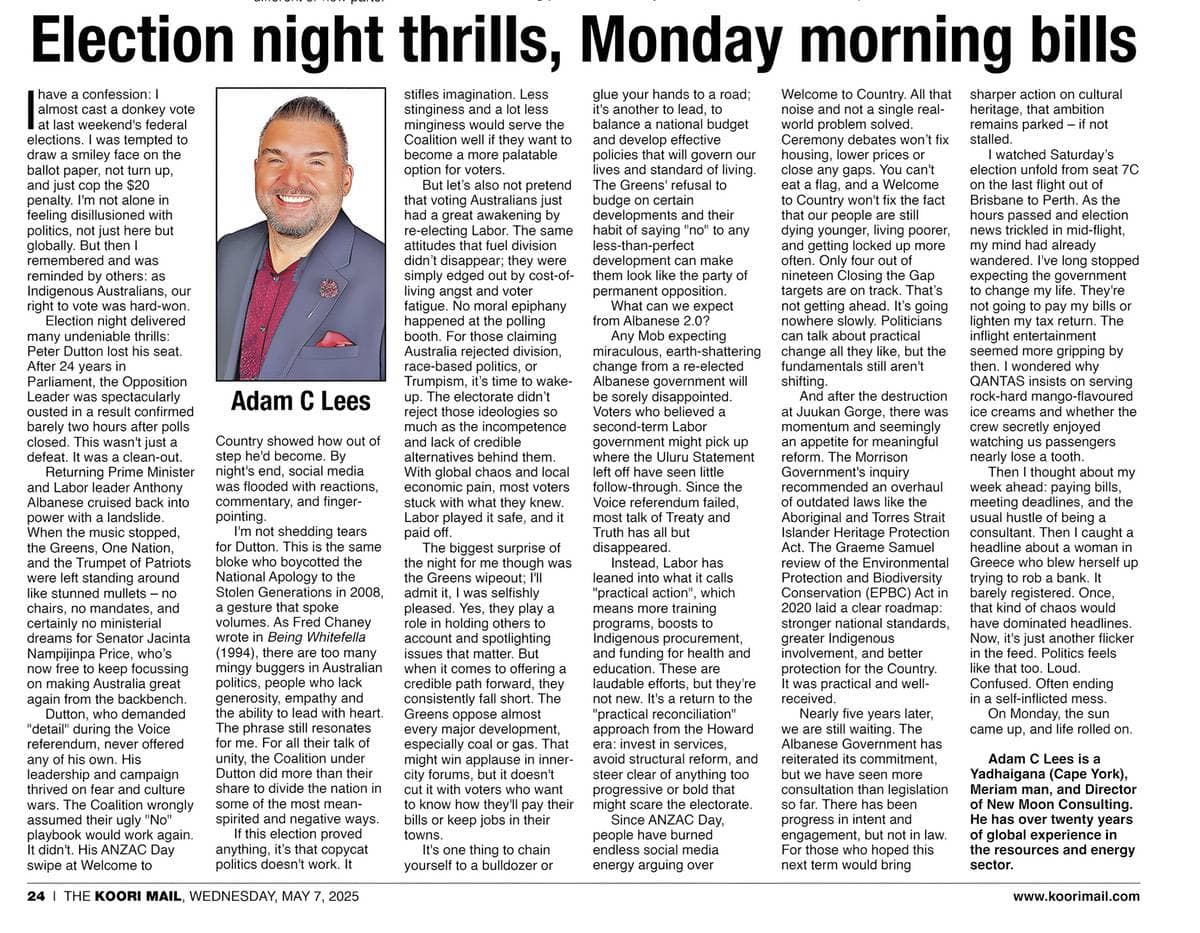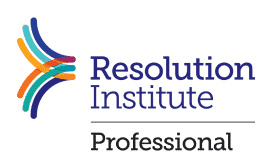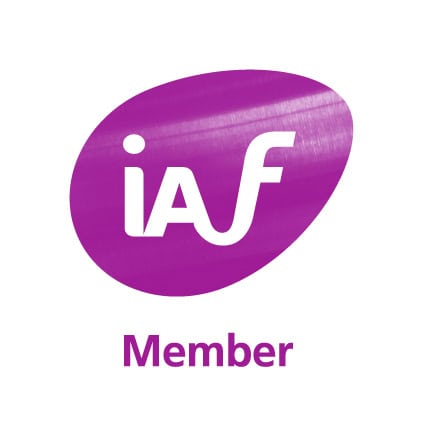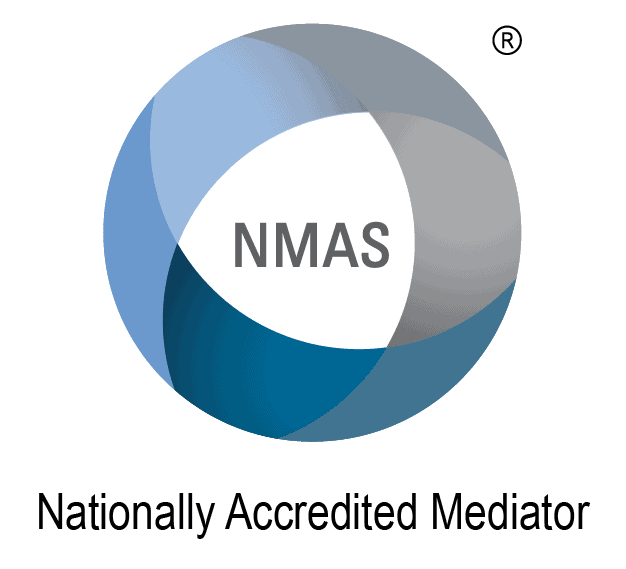I couldn’t help but feel bemused upon reading that the Federal Court ordered the Environmental Defenders Office (EDO) to pay $9 million in legal costs to Australian energy provider Santos last week. The case stemmed from years of litigation over ‘Santos’ $5.8 billion Barossa gas project, which aims to supply energy to northern Australia and beyond.
The EDO tried to stop the project for a group of Tiwi Islanders, claiming it would harm cultural heritage sites. The Federal Court found the claims relied on weak evidence and flawed cultural mapping. This tactic wasted time and money, resulted in protracted legal battles, and stalled a project critical to energy security and economic development opportunities for some Traditional Owners.
Justice Natalie Charlesworth didn’t mince words, describing the cultural mapping central to the case as “so lacking in integrity that no weight can be placed on it” and condemning the EDO’s entire approach for falling “far short” of what the court expects from expert witnesses.
Since the court case and through subsequent media scrutiny, the roles of Indigenous consultants, academic experts, and EDO lawyers have been laid bare in stark detail. It shows that environmental activists have sunk to new lows, coaching witnesses and exploiting some Traditional Owners to serve their own agendas. The extent of their cringeworthy methods and e-mail exchanges makes for juicy reading, with correspondence between the EDO representatives and experts revealed last week in a detailed exposé by The Australian. Now, the EDO will have to cough up millions for their efforts.
I thought green activists glueing their noses or tongues to walls and roads, vandalising public artworks, cementing their arms in metal pipes, or chaining themselves to structures were the height of desperation. Making up claims to weaponise cultural heritage is a new low, crossing the line from protest to deceit. Their actions have sown community division and unfairly tarnished some Traditional Owners as unreliable and untrustworthy.
The EDO’s actions in the Barossa case have done all Australians a favour. They have lifted the veil on environmental lawfare and revealed the lengths to which some green groups will go to try to scuttle resource developments by using gammon (fake) evidence even if it is at the Indigenous communities expense. This is bigger than one legal case; it’s a shameful and embarrassing example that deserves to result in public funding for the EDO being pulled or, at the very least, heavily scrutinised and conditioned.
The Barossa case is reminiscent of the Hindmarsh Island bridge affair, where claims of fabricated “secret women’s business” have left a legacy of mistrust and scepticism. Then there’s parallels with the McPhillamy’s Gold Project, halted by Environment Minister Tanya Plibersek after heritage claims from some Wiradjuri leaders has fuelled concerns about environmental activism and their unconscionable conduct in exploiting cultural heritage to block major developments, often without clear or consistent evidence.
This behaviour erodes trust in Free, Prior and Informed Consent (FPIC) processes, designed to respect Indigenous voices. It also weakens public confidence and leaves Indigenous groups vulnerable to claims of dishonesty. When cultural heritage claims are manipulated or used to serve external agendas, FPIC is reduced to a tool of obstruction rather than genuine consultation and consent. Such approaches don’t just undermine confidence in the system; they harm Indigenous communities themselves, whose legitimate cultural heritage claims are met with growing suspicion as a result.
Mining, oil, gas, and other major developments must be carefully scrutinised and comply with FPIC principles. Yet, when legal challenges rely on fabricated evidence, they weaken these processes and risk undermining protections for legitimate cultural heritage sites and cultural landscapes while harming the credibility of their advocates.
The only beneficiaries here are the lawyers and large firms profiting from these cases, while Indigenous communities are left to shoulder greater burdens of proof and face growing scepticism. The EDO and their advisors’ reputations are in ruins, and their actions must be addressed. I believe their tactics undermine self-determination, make a mockery of cultural heritage protection, and represent a misuse of public funds. Groups like the EDO must face stricter oversight, and their role in future cases should be approached with extreme caution and scrutiny.
Adam C Lees is a Yadhaigana (Cape York), Meriam man, and Director of New Moon Consulting. He has over twenty years of global experience in the resources and energy sector.
